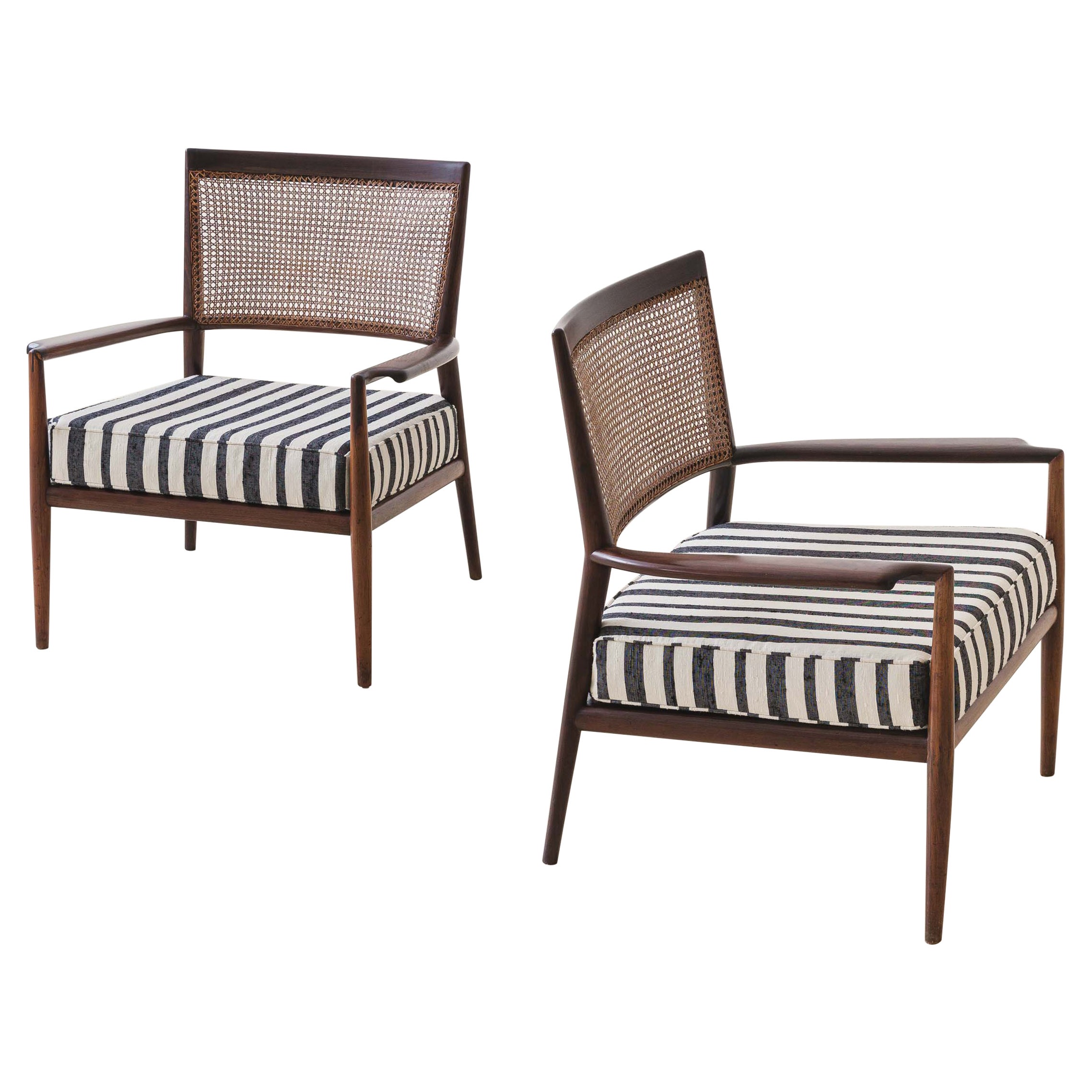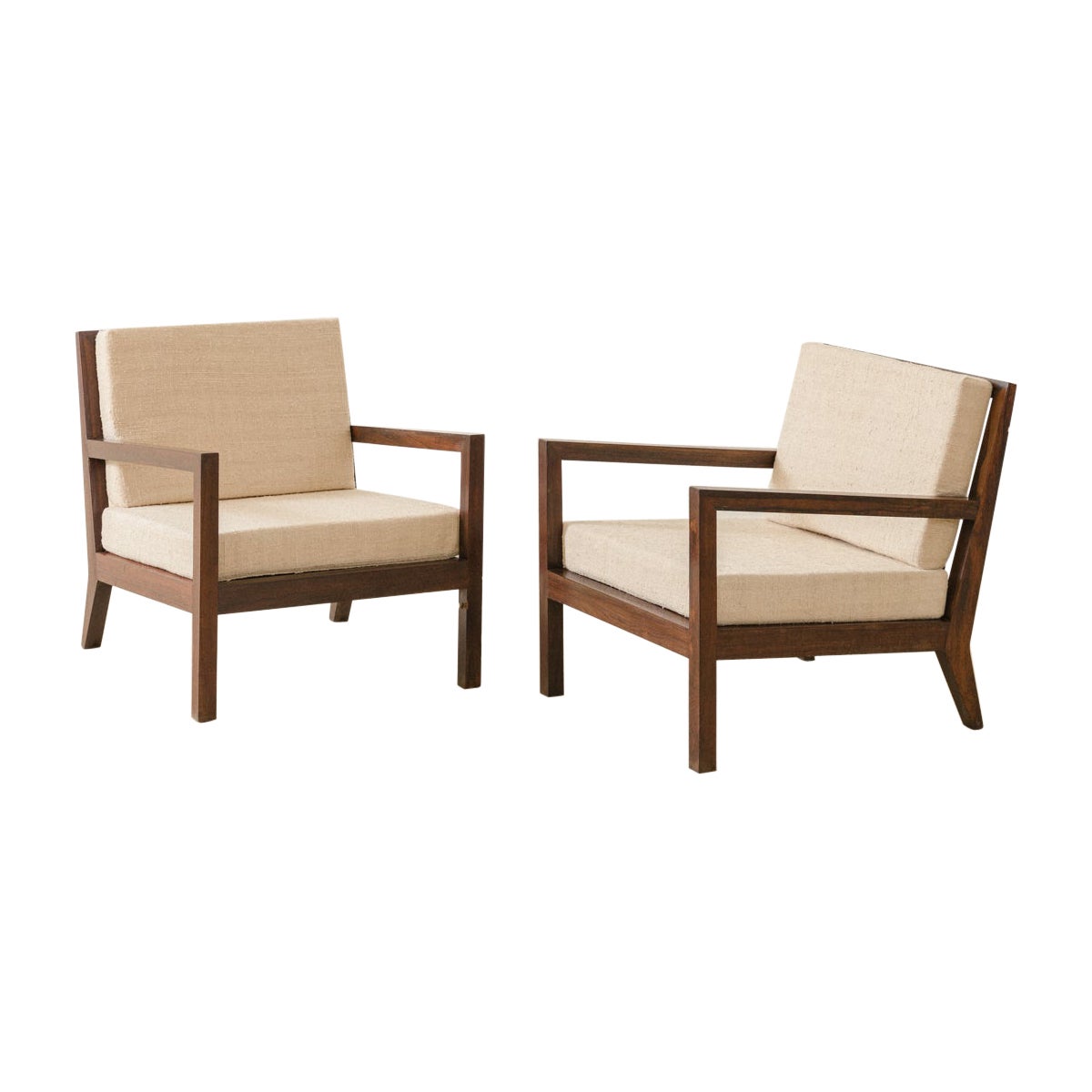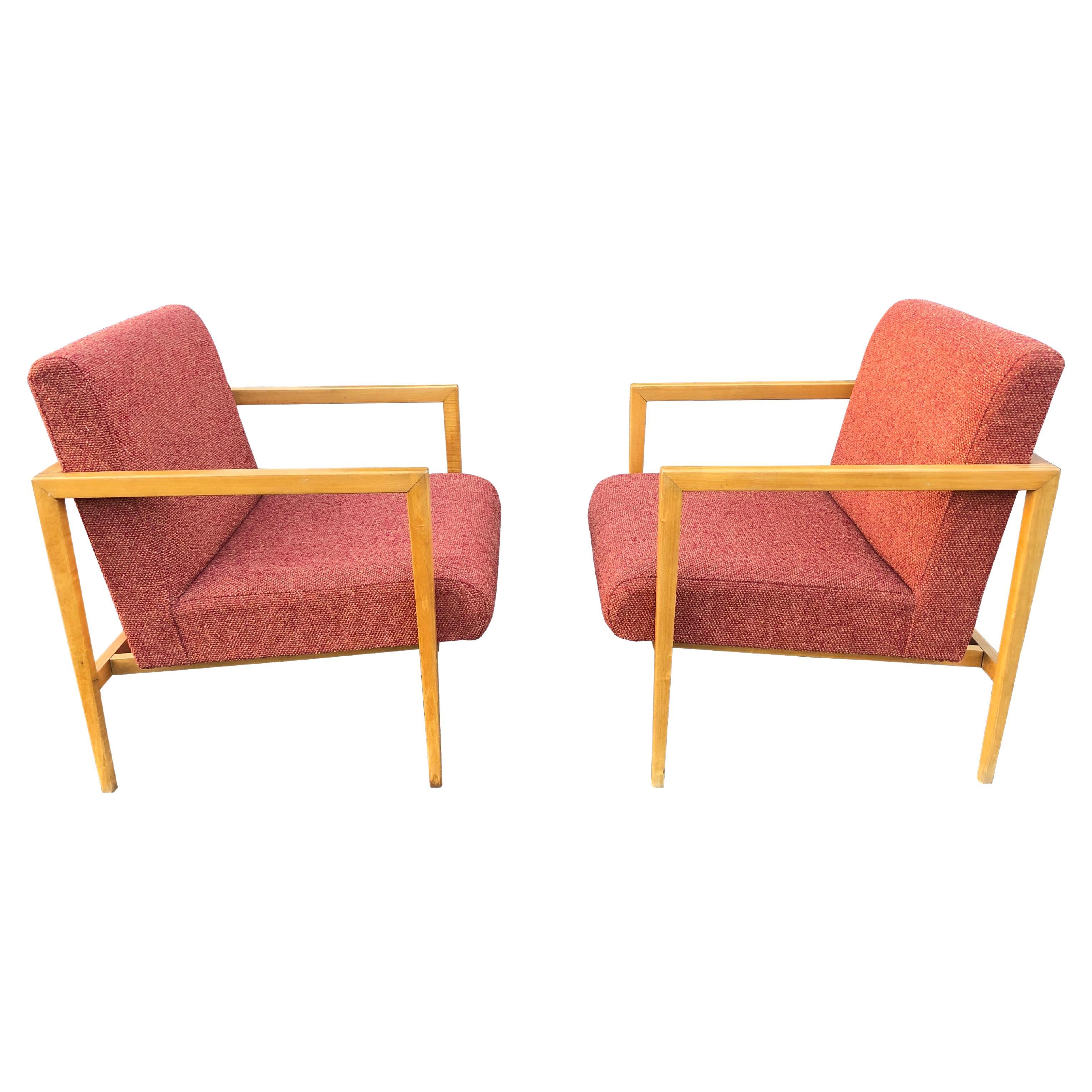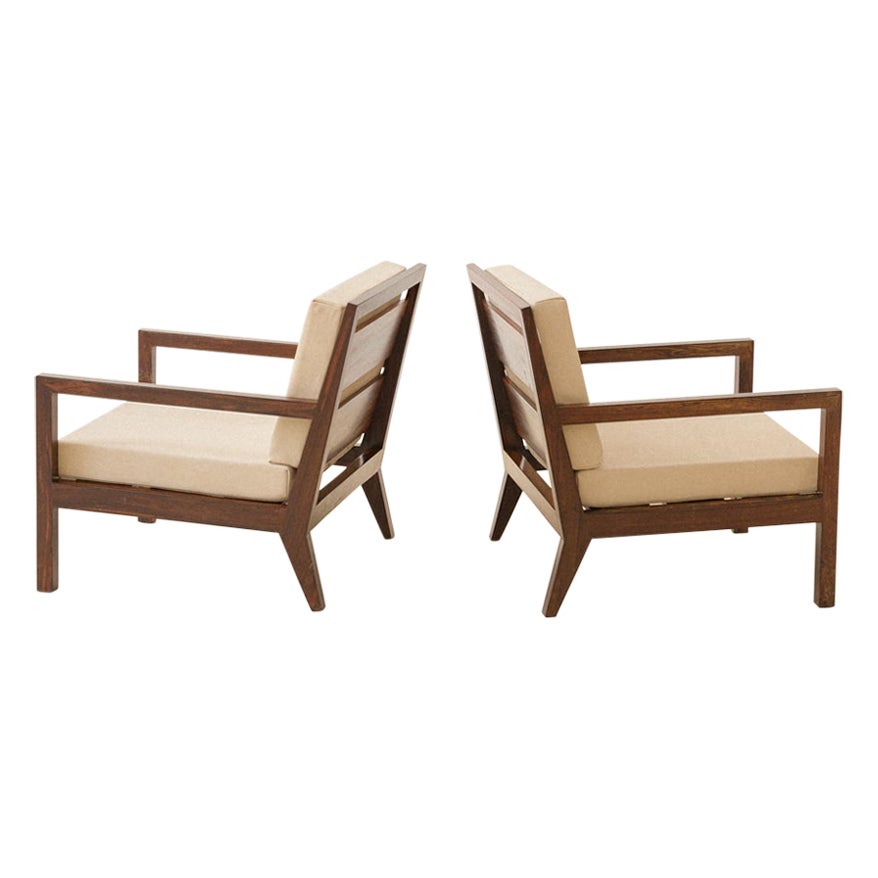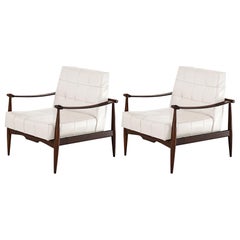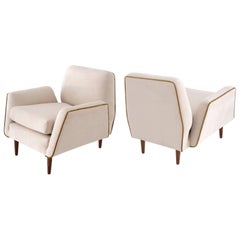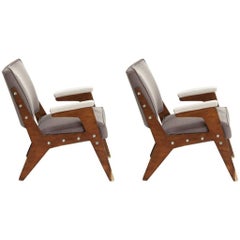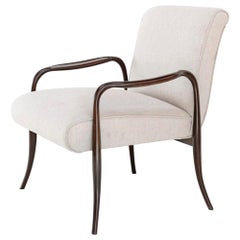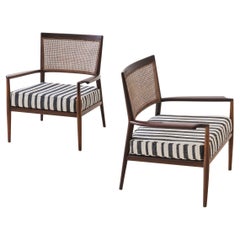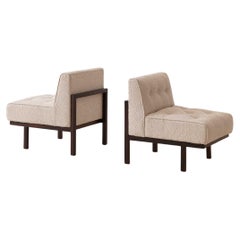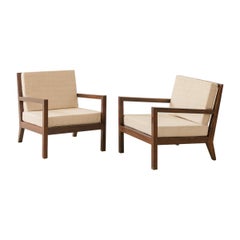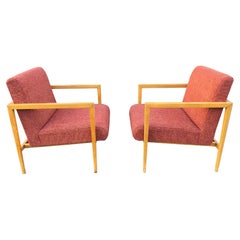Branco e Preto Pair of Modern Brazilian Armchairs solid jacaranda wood, fabric
About the Item
- Creator:Branco & Preto (Designer)
- Dimensions:Height: 29.14 in (74 cm)Width: 23.23 in (59 cm)Depth: 24.02 in (61 cm)Seat Height: 16.54 in (42 cm)
- Sold As:Set of 2
- Style:Mid-Century Modern (Of the Period)
- Materials and Techniques:
- Place of Origin:
- Period:
- Date of Manufacture:1950
- Condition:Wear consistent with age and use.
- Seller Location:Barcelona, ES
- Reference Number:1stDibs: LU237436767933
Branco & Preto
Six young architects joined forces in the 1950s to create Branco & Preto in São Paulo. Together, they created high-end modern furniture inspired by the spirited reinvigoration of art and architecture in Brazil.
The six founders — Miguel Forte, Jacob Ruchti, Plínio Croce, Roberto Aflalo, Carlos Millan and Chen Y Hwa — all attended Mackenzie Architecture University, a school led by architect and modernist critic Cristiano Stockler das Neves who prioritized neoclassicism. As progressive students, the founders rebelled against this status quo in their work.
During the 1950s, there were few designers of modern furniture based in Brazil aside from Brazilian furniture firm Mòveis Artisticos Z and Portuguese-born furniture designer Joaquim Tenreiro. Branco & Preto helped fill a wide gap in the market.
Brazilian modernist pioneers Rino Levi and Gregori Warchavchik were important early connections. Through them, Ruchti and Forte met American architect Philip Johnson and German-American architect Ludwig Mies van der Rohe; meanwhile, Croce, Alfalo and Millan drew inspiration from the works of Austrian-American architect Richard Neutra and Hungarian-American architect and furniture designer Marcel Breuer.
As a proponent of “Rio modernism,” Branco & Preto often combined glass, iron and calacatta marble with Brazilian woods like jacaranda and caviuna to make its handcrafted furnishings. Free from plywood and screws, this furniture required the expertise of skilled woodworkers, especially for the MF5 armchair and slatted coffee table. Both designed by Millan, they are among Branco & Preto’s most recognized works.
On 1stDibs, find a collection of Branco & Preto tables, seating and case pieces and storage cabinets.
- ShippingRetrieving quote...Shipping from: Casavells , Spain
- Return Policy
More From This Seller
View All20th Century Brazilian Modern Armchairs
Upholstery, Jacaranda
Mid-20th Century Brazilian Mid-Century Modern Armchairs
Upholstery, Wood
Mid-20th Century Brazilian Mid-Century Modern Armchairs
Plywood, Velvet
Vintage 1940s Brazilian Armchairs
Fabric, Jacaranda
Vintage 1940s Brazilian Armchairs
Fabric, Jacaranda
Vintage 1950s Brazilian Armchairs
Fabric, Wood
You May Also Like
Vintage 1950s Brazilian Mid-Century Modern Armchairs
Rosewood, Silk, Cane
Vintage 1950s Brazilian Mid-Century Modern Armchairs
Rosewood, Fabric
Antique 1660s Brazilian Mid-Century Modern Armchairs
Rosewood, Silk
Mid-20th Century Brazilian Mid-Century Modern Armchairs
Fabric, Hardwood
Antique 1660s Brazilian Mid-Century Modern Armchairs
Rosewood, Leather
Vintage 1950s Brazilian Mid-Century Modern Armchairs
Leather, Wool, Hardwood
